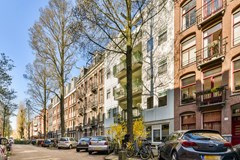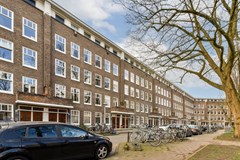The market has shifted from a seller's market to a market that benefits both sellers and buyers.

The housing market is experiencing a turning point with a declining number of home purchases and an increasing supply. After a long period when the housing market was in favor of sellers, it now appears that a balance is being restored. The increased supply and slightly declining house prices have turned it into a market for both sellers and buyers. It is essential to maintain a healthy balance in the housing market, not only for buying but also for renting.
Causes of the turning point in the housing market
There are several reasons for the turning point in the housing market. One significant reason is the rising mortgage interest rates. This means that, based on income, a lower mortgage is available compared to lower interest rates. A lower maximum mortgage means that the price range for potential homebuyers to purchase a home decreases.
The higher mortgage interest rate is a significant factor contributing to the decline in house prices. Another factor is the increasing inflation, which is quite high. High inflation leads to a decrease in purchasing power. Additionally, there is a general economic downturn that has an impact on the housing market. Higher energy prices also play a role. Poorly insulated homes are currently less popular because high energy consumption leads to higher energy costs.
Different situation than in 2008
Over a period of nearly ten years, house prices have risen, and now a decline, similar to what happened in 2008, is occurring. Back then, the housing market bubble burst, and many homes went underwater. The expectation now is that it will be different this time, resulting in a healthier balance in the housing market. The difference from 2008 is that the borrowing behavior of homeowners is now less risky. This is due to changes such as being able to get a mortgage only up to the value of a home. Buyers usually contribute their own funds to finance the purchase costs, which was not the case in the past. It is also no longer possible to obtain a fully interest-only mortgage.
Slight risk
There is a slight risk that house prices may continue to decline. This situation may occur if potential homebuyers wait for the expectation of further price declines. This could lead to home sellers wanting to sell their own homes first before buying another property. This effect would increase the number of homes available for sale. However, it remains to be seen if this will happen because housing market tightness still exists. This is also different from the situation in 2008 because the demand for homes is now higher than in the past. Moreover, the production of new housing has decreased, further exacerbating the shortage.
Housing agreements with provinces
Minister Hugo de Jonge recently made housing agreements with provinces to build 900,000 new homes by 2030. This includes a significant number of affordable homes, with 350,000 in the mid-range segment of both rental and purchase properties.
Maintaining balance for a healthy functioning housing market
The turning point in the housing market is creating a better balance for both buyers and sellers. However, it is important to maintain this balance to keep the housing market functioning healthily. One key condition for this, both in terms of buying and renting, is that Minister Hugo de Jonge does not go too far in regulating the current housing stock in the free housing market. In addition to the plans for new construction in all provinces, housing policy also involves regulating the rental housing market in the middle-income range.
Effects of regulating the free rental market
Regulating the free sector and middle-income rental has consequences for rental prices, with the possible effect of further reducing the value of certain homes. For example, in major cities like Amsterdam, an apartment smaller than 80 square meters can no longer be rented above the cost price. As a result, the value of such apartments is decreasing. Hugo de Jonge plans to introduce a point system for the free rental sector, which is now also applicable to the social housing system. The goal is to curb high rental prices for homes with a rent above 1,000 euros. The Minister of Housing and Spatial Planning wants to apply rent price protection to this category.
Rent price protection
Rent price protection is currently set at 763.47 euros (2022) and applies to social housing. Hugo de Jonge believes that the housing shortage leads to extremely high rental prices, where the price is no longer proportional to the quality and size of the homes. People with a middle income are excluded because their income is too high for social housing and too low to afford extremely high rental prices. However, the minister has accommodated the wishes of property developers. Earlier, there was a plan to apply rent price protection to rental prices between 1,000 and 1,250 euros.
This led to objections from some property developers who believed that new construction of rental housing might not be profitable in that case. Now, the threshold has been set lower, giving property owners the opportunity to determine the rental price above the 1,000-euro threshold themselves. This is also good news for individuals who buy real estate to rent it out. The minister is continuing to work on the details, and the specific amount of rent price protection will be announced in November.
If you want to get the highest price for your home when selling or negotiate the ideal purchase price as a buyer, Amstelland Makelaars knows the Amsterdam housing market like no other and is ready to use our expertise for you. We also specialize in renting homes to expats.











